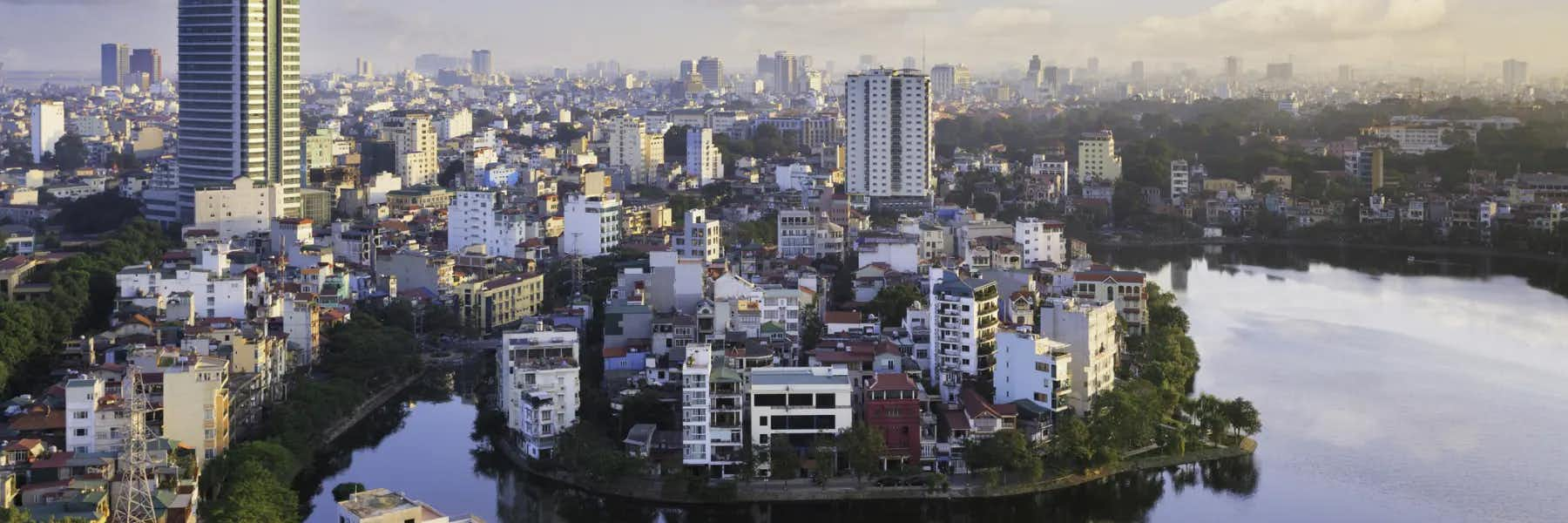Hanoi is Vietnam’s capital city. It’s the political hub of the country, as well as the cultural and historical center. Founded more than 1,000 years ago, the city remains steeped in tradition. Hanoi was occupied by the Chinese for much of its early history, and later by the French. Both countries left a lasting cultural imprint. Centuries-old Buddhist temples are scattered throughout the city, often set alongside hundred-year-old French colonial mansions and an ever-increasing number of modern skyscrapers. It’s an eclectic mix of East and West, old and new.
Numerous parks and lakes provide shade and tranquility to this otherwise bustling metropolis, as millions of motorbikes, cars, bicycles, buses, and pedestrians all compete for space on roads that weren’t originally designed for motorized traffic. Cyclos (three-wheeled pedicabs) sedately ferry wide-eyed tourists through the atmospheric warren of ancient streets. Entire neighborhoods are hidden in the interior of city blocks, accessed by narrow alleys designed only for two-wheeled vehicles and foot traffic.
Beautiful Hoan Kiem Lake is the heart of central Hanoi. This peaceful oasis is surrounded by lovely shade trees and flowers, views of ancient temples, colonial mansions, and the ancient, bustling maze of little streets known as the Old Quarter. In the early morning hours, ladies practice tai-chi by the lake, as the men huddle together playing Chinese chess and gossiping. In the evenings the park comes alive with walkers, joggers, and snuggling lovers. On the weekends, the roads around the lake are closed to motorized traffic, and the entire area transforms into a pedestrian mall, with musicians, artists, happy families, and curious tourists taking over the busy streets.
Wherever you live in Hanoi, you’ll find an eclectic, chaotic hodgepodge of activity that never seems to slow down. Bustling markets, bicycle vendors hawking their products, people whiling away the hours in outdoor beer halls and sidewalk cafés, and children playing in the streets as their mother’s chase after them with bowls of food—it’s all part of the unique Hanoi experience.
Lifestyle in Hanoi
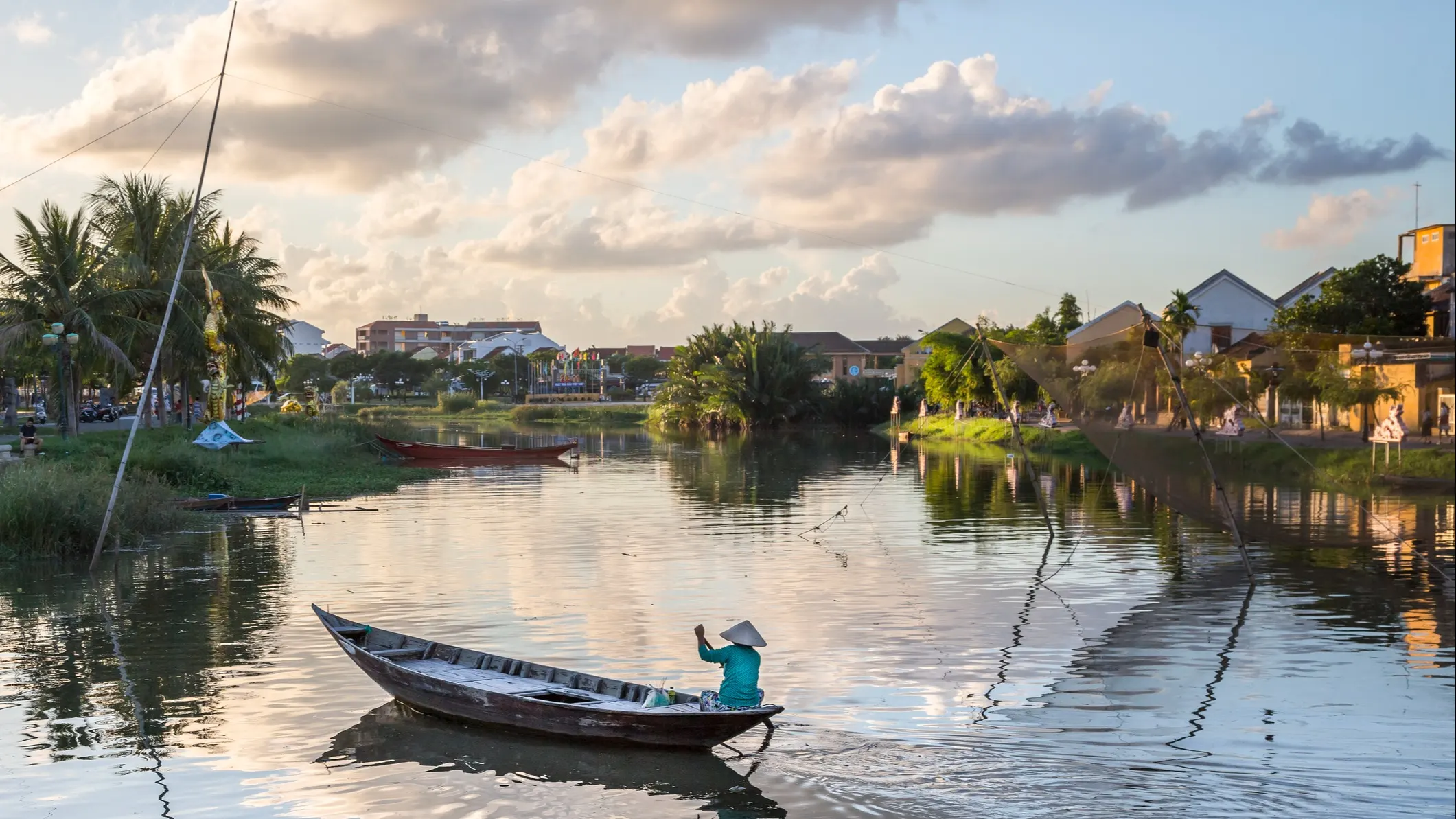
Hanoi is a delightfully livable city due to its unique culture, proximity to many of Vietnam’s most impressive tourist attractions, and its low cost of living. There’s unique architecture, fascinating historical sites, and a vibrant, traditional city center. Its charming lakes, parks, and tree-lined boulevards are oases of calm in this burgeoning, bustling city. The hot summers, chilly winters, and near-perfect spring and fall weather are an added benefit.
It isn’t hard to imagine the Hanoi of times past while walking in the warren of small streets and tiny alleyways that make up the Old Quarter. Tiny mom-and-pop shops and a never-ending procession of street vendors sell everything from fruits and vegetables to shoes, flowers, and brooms. Enterprising ladies set up portable kitchens and tiny plastic chairs along the sidewalks, treating diners to fresh, inexpensive meals, using family recipes that have been handed down for generations.
Take a step back in time to Paris in the early 20th century while exploring the French Quarter. Grand French colonial mansions house government buildings, museums, embassies, upscale hotels, and gourmet restaurants. Century-old shade trees provide pleasant respite, near trendy bistros selling fresh pastries, cakes, and strong coffee.
Hanoi makes a perfect base to explore many of Vietnam’s top attractions. Ba Vi National Park, Cuc Phuong National Park, the UNESCO World Heritage Site of Halong Bay, the exotic Perfume Pagoda, ancient handicraft villages, and the rivers, caves, and mountains of Ninh Binh Province are all easy daytrips from the city.
Cost of Living in Hanoi
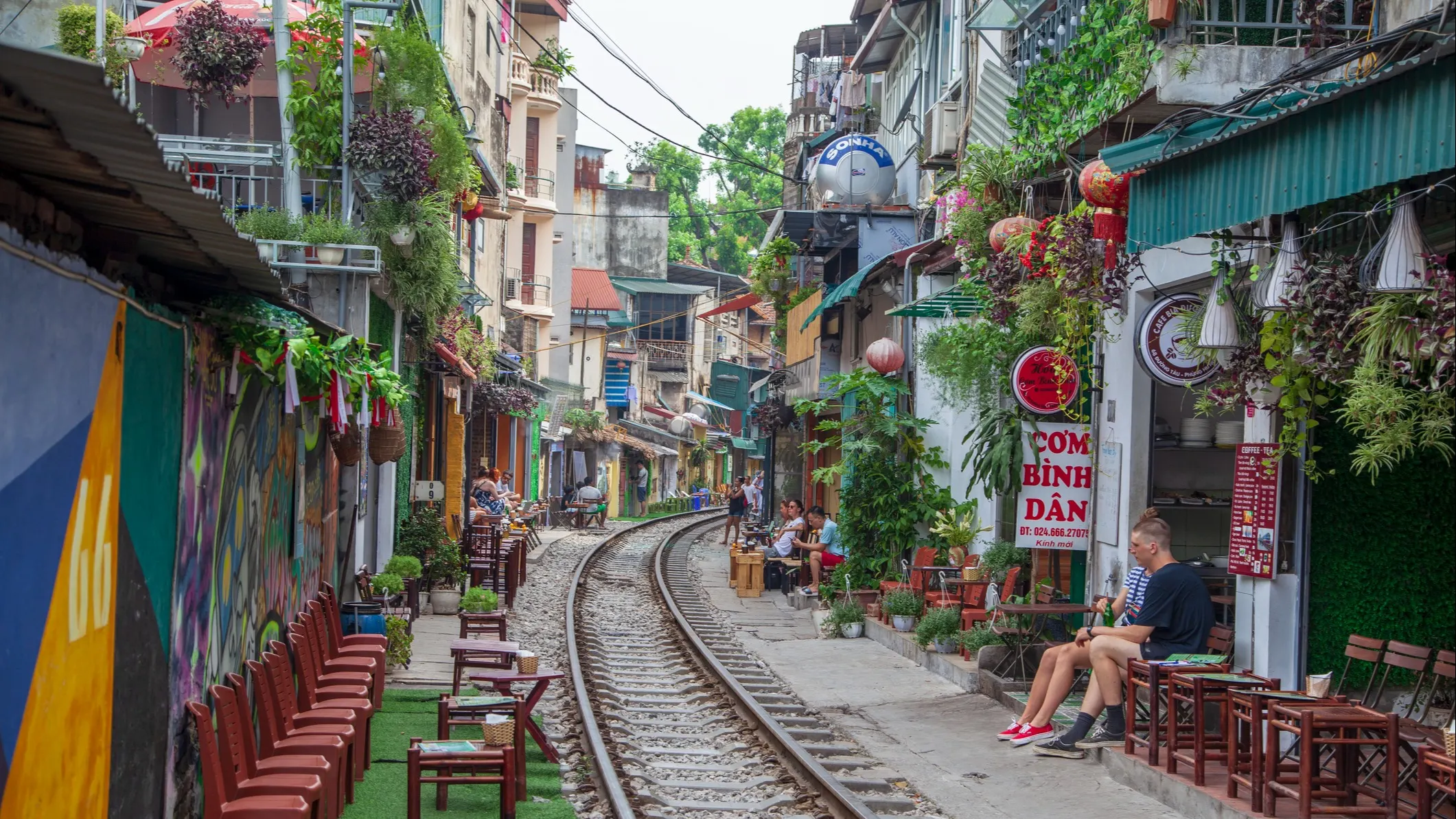
Hanoi has one of the lowest costs of living of any major city in Southeast Asia. A bag of fresh local vegetables and tropical fruit won’t cost more than a couple of dollars at one of the many traditional markets, and supermarkets offer wide selections of local and imported goods at reasonable prices. There are at least two dozen specialty imported food stores in the city and an ever-expanding assortment of restaurants serving international fare—impressive for a city where you couldn’t find a hamburger at any price just 10 years ago. Buses transport those who don’t want to contend with the traffic, and the fare to practically anywhere in the city is less than 35 cents. Affordable metered taxis are everywhere. A couple can live a comfortable middle-class lifestyle in Hanoi on a budget of $1,000 per month or less.
Here is a sample monthly budget for two people living in Hanoi:
| Expense | U.S. $ |
|---|---|
| Rent (one-bedroom apartment) | $450 |
| Electricity | $50 |
| Water | $2 |
| Cell phone with unlimited data | $3 |
| Gas heating | $2 |
| Internet (fiber-optic) | $12 |
| Cable TV | $5 |
| Housekeeper (four hours a week) | $32 |
| Transportation (two monthly bus passes) | $14 |
| Groceries | $85 |
| Entertainment (eating out five nights a week, including beer or soft drinks, occasional nights out at the movies or other entertainment) | $250 |
| Monthly Total: | $905 |
Retire in Hanoi

Hanoi is a favorite traveler’s destination due to its unique culture, its proximity to many of Vietnam’s most impressive tourist spots, and its low cost of living. There’s unique architecture, fascinating historical sites, and a vibrant, traditional city center. Its charming lakes, parks, and tree-lined boulevards are oases of calm in this burgeoning, bustling city. The hot summers, chilly winters, and near-perfect spring and fall weather are also attractive to many foreigners.
Hanoi, Vietnam’s capital and the second largest city, celebrated its 1,000-year anniversary in 2010. Hanoi has retained many of its ancient traditions, while offering all the modern amenities that expats desire.
It isn’t hard to imagine the Hanoi of times past while walking in the warren of small streets and tiny alleyways that make up the Old Quarter. Tiny mom-and-pop shops and a never-ending procession of street vendors sell everything from fruits and vegetables to shoes, flowers, and brooms. Enterprising ladies set up portable kitchens and tiny plastic chairs along the sidewalks, treating diners to fresh, inexpensive meals, using family recipes that have been handed down for generations.
Step back in time to Paris in the early 20th century while exploring the French Quarter. Grand French colonial mansions house government buildings, museums, embassies, upscale hotels, and fancy restaurants. Numerous parks and shade trees provide pleasant respite, near trendy bistros selling fresh pastries, cakes, and strong coffee.
Central to both the Old Quarter and the French Quarter is peaceful Hoan Kiem Lake, the spiritual heart of Hanoi. Many foreigners have chosen to live in this vibrant part of the city, which is within walking distance of many of Hanoi’s finest restaurants, an active nightlife scene, and many of the city’s top attractions.
Tay Ho (West Lake) is the largest lake in Hanoi, and Tay Ho District is one of the most popular areas for expats. Restaurants in Tay Ho offer a wide variety of cuisines, ranging from American to Ukrainian, and everything in between. Many shops here sell imported foods and products. Tay Ho is a popular area for expat get-togethers, as only a few tourists venture into this part of the city.
Tay Ho is the most expensive district in Hanoi. Many homes are on quiet streets with small yards, and families with children will be close to several well-regarded international schools. The better apartments offer spectacular views overlooking the lake and the city skyline. Retirees who want to live in luxury will often find themselves settling here, though it’s possible to find more affordable housing in this area, too.
Ba Dinh District is not far from either West Lake or Hoan Kiem Lake, and is the home of many of Hanoi’s embassies and administrative buildings. Some of Hanoi’s most elegant mansions are located here. Ba Dinh is convenient to both Hoan Kiem and Tay Ho, yet it has a local feel. Foreigners who like the idea of integrating into Vietnamese culture will enjoy living in this part of the city.
There are several large, modern supermarkets, department stores, and malls located in Hanoi. The traditional markets, where fruit, produce, and meat are sold, often offer fresher and less expensive fare than what is found in the supermarkets.
Hanoi’s JCI accredited Vinmec International Hospital offers comprehensive medical services at reasonable prices. A visit to an English-speaking specialist costs about $30. Several other international hospitals and clinics provide good care to foreigners, though they are often more costly.
Many of Vietnam’s top attractions are located within a few hours of Hanoi, including nearby Ba Vi National Park, Cuc Phuong National Park, the UNESCO World Heritage Site of Halong Bay, the exotic Perfume Pagoda, and the rivers, caves, and mountains in Ninh Binh Province.
Video Tour of Home in Hanoi
by Wendy Justice
I live on a tree-lined street in Hanoi’s Dong Da District. I like the area, as it’s near public transportation and less than a 15-minute drive to the city center, yet it’s a very local neighborhood. There are dozens of restaurants and coffee shops within a five-minute walk, two grocery stores, two bakeries, a peaceful lake nearly across the street, and many friendly neighbors, even if I can’t necessarily communicate well with them unless I use a translator. In the mornings, there’s a small market just a few feet outside my door, where I can pick up food for breakfast or buy a bowl of hot duck noodle soup for a $1.
The three-bedroom apartment is in a quiet lane in a well-maintained building. The $750 per month rent includes water, trash, 24-hour security, parking, high-speed fiber-optic internet, cable TV, and twice weekly cleaning. All I have to pay for is electricity and cooking gas, both of which are quite reasonable. During an average month, I might spend about $4 in cooking gas and $60 for electricity. I signed a year lease when I rented the apartment, and renewed it last summer with no increase in rent. As with many apartments in Hanoi, my rent is payable every three months. My lease is in both Vietnamese and English and protects both the owner and myself. The apartment is fully furnished, and practically everything I need is included—pots and pans, dishes, glasses, silverware—even some of the knickknacks and bouquets of silk flowers.
Hanoi is a densely populated city of over 8 million, so few places come with pools or tennis courts—space is always at a premium. If I did want to enjoy those activities, however, I could walk to a hotel in ten minutes and pay a nominal fee for the use of their facilities.
Expat Hangouts in Hanoi
By Wendy Justice
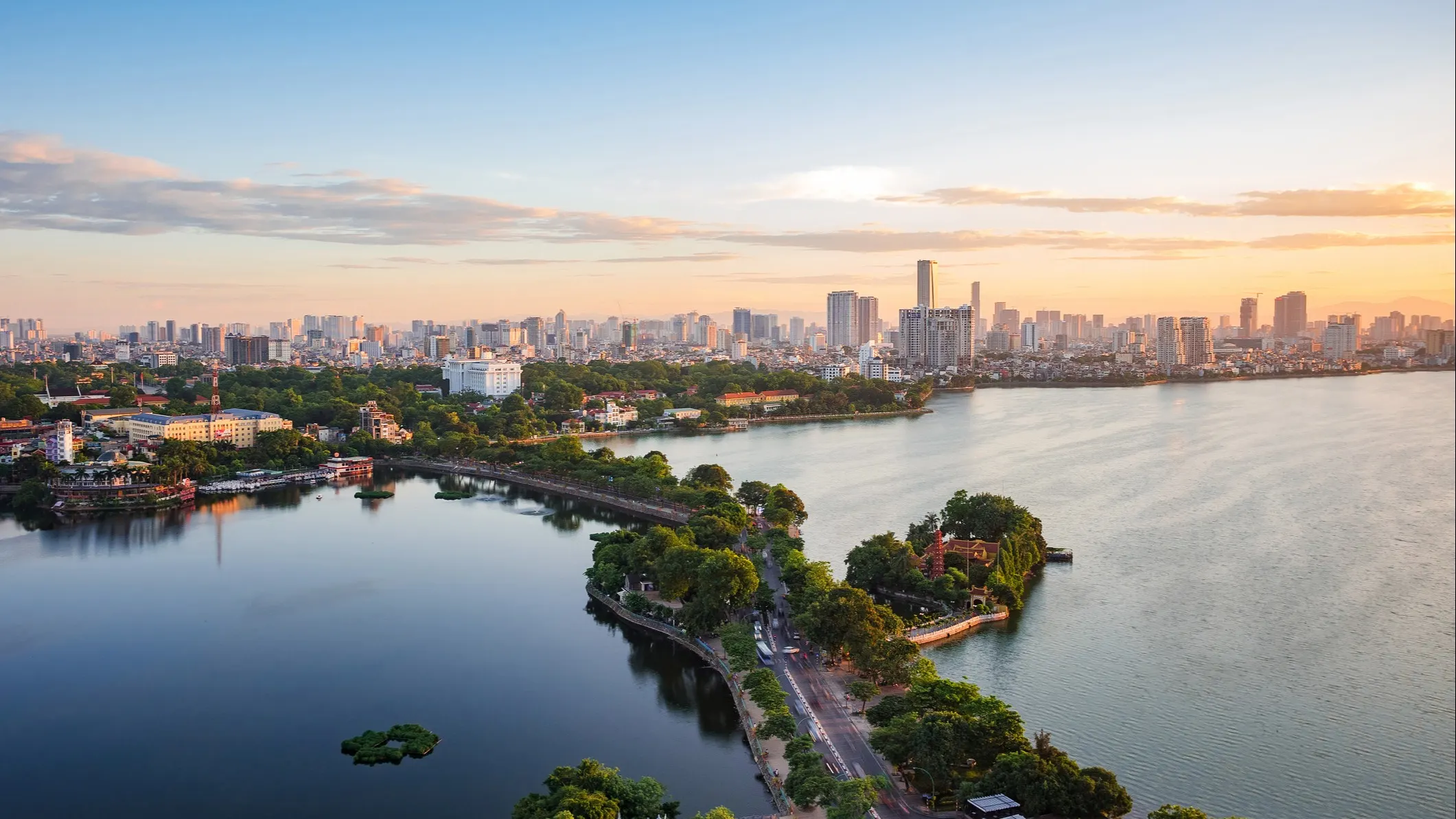
Hanoi, Vietnam’s bustling capital city, has long been a favorite destination for foreigners. The eclectic mix of architecture is stunning, the food is healthy and delicious, the cost of living is low, and the surrounding area beckons exploration. Most importantly, Hanoians are a welcoming people, and making local friends is easy. Over 10,000 foreigners, myself included, have chosen to make Hanoi their home.
Many foreigners have settled in the Tay Ho (West Lake) district, northwest of the city center, though you’ll find expats living throughout Hanoi. Tay Ho is full of expat-welcoming restaurants, bars, and shops. Many foreigners who live here teach at one of several international schools in Tay Ho; for the most part, they tend to be younger and more transient than you’ll find elsewhere in the city. Some older expats also enjoy this part of town, since there are so many places to eat, shop, and meet other like-minded folks.
Hanoi has a different expat community than you’ll find in many other towns with a large population of foreigners, in that, so many of them socialize predominately with the local people. Tay Ho is as close to an enclave as Hanoi gets and even it has a significantly mixed population. There are certainly opportunities for meeting other foreigners, but it seems that many older expats spend more time in the company of local Vietnamese residents, especially once they become comfortable in their newly adopted city. Therefore, so many of Hanoi’s older and retired expats live in districts outside of Tay Ho, including the Old Quarter, the French Quarter, and in the part of Ba Dinh District that’s near many of the city’s embassies. Wherever they live, though, almost everyone takes at least the occasional trip to Tay Ho to buy hard-to-find imported goods, or to take in the outstanding food and nightlife scene in this area.
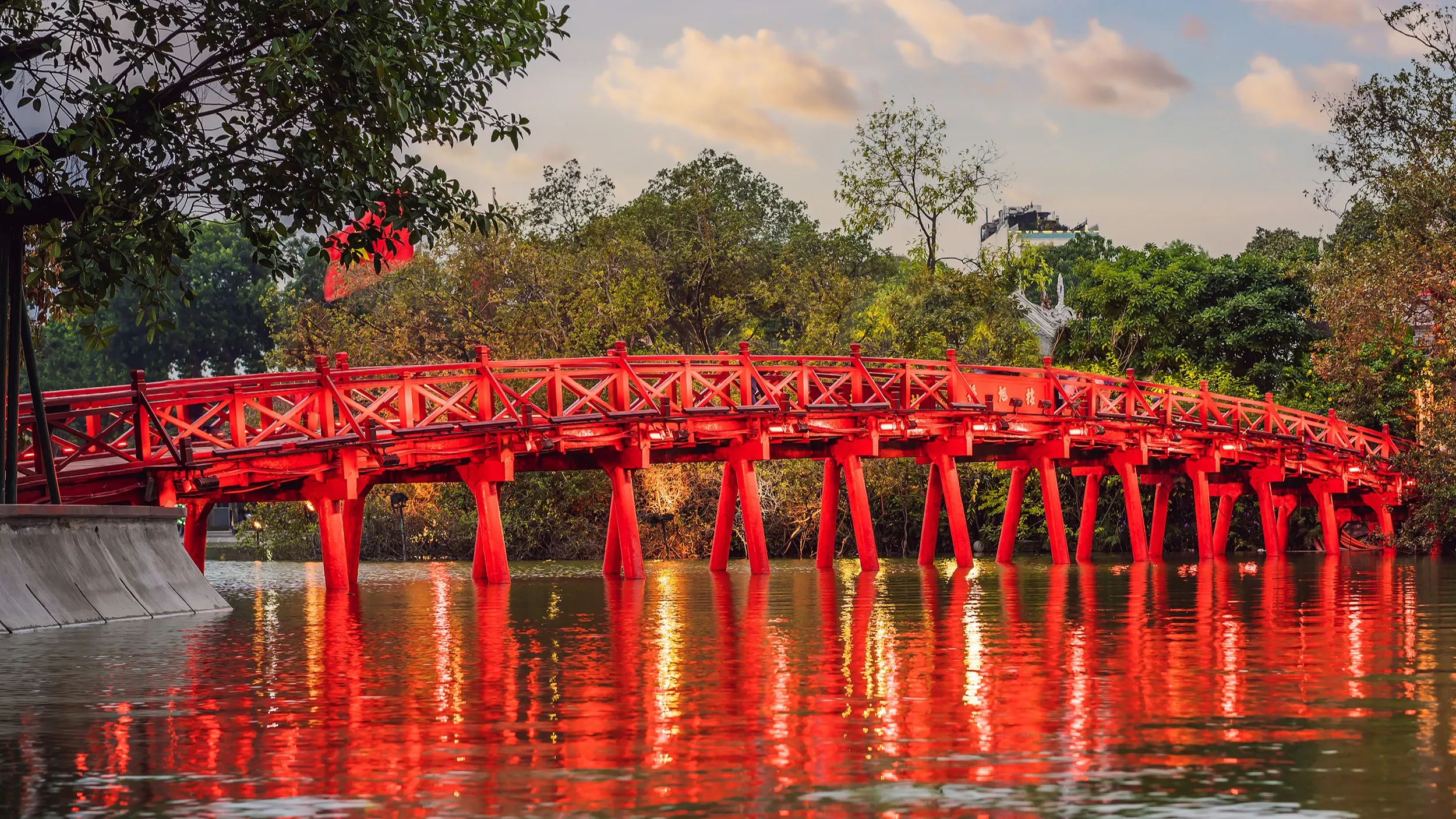
Tay Ho’s main business district is built along Xuan Dieu Street. From the moment you turn off the Au Co Highway, you’ll see evidence of its strong expat influence—L’s Place, a supermarket selling mostly imported food, is on the left, and Friend’s Bar is on the right. Continue past coffee shops, bars, bakeries, craft beer hangouts, and restaurants catering to an array of nationalities until you get to the Syrena Shopping Center on the left. This mall isn’t a large one, but it is well-tailored to Hanoi’s expats. You’ll find the Elite Spa and Fitness Center, a large, expat-friendly supermarket, several restaurants specializing in everything from pizza to sushi and ramen, coffee shops, and the excellent (if expensive) Annam Gourmet store, with its huge selection of imported specialty foods, cheeses, sausages, and deli items.
As you continue down Xuan Dieu Street, you’ll see a few streets off to the left; all of them have expat-popular restaurants, coffee shops, fitness centers, spas, and opportunities for nightlife. Pick one you like and visit a few times; before long, you’ll be a familiar face and making friends will come naturally.
A few places, in particular, are quite popular with Hanoi’s expats, and most of them are in Tay Ho. Joma Bakery Café is a long-standing favorite in the heart of the expat neighborhood; they have strong internet and a comfortable area to relax while savoring good coffee, smoothies, pastries, bagels, and light meals. The Moose and Roo Pub and Grill is another place that expats gather to drink and eat; the Canadian owner is a superb host and the North American cuisine is as good as you would find “back home.” 7Bridges Hanoi Taproom is a popular place along Xuan Dieu for craft beer and innovative pub food; it’s near Tracy’s Sports Pub and Burger, a tiny restaurant that serves up great hamburgers in a collegial setting. Texan-owned Anita’s Cantina attracts expats who need a good Mexican food fix and a cold margarita; it’s usually full every night. There are many other excellent places to eat, drink, and meet others in Tay Ho, with more establishing themselves all the time.
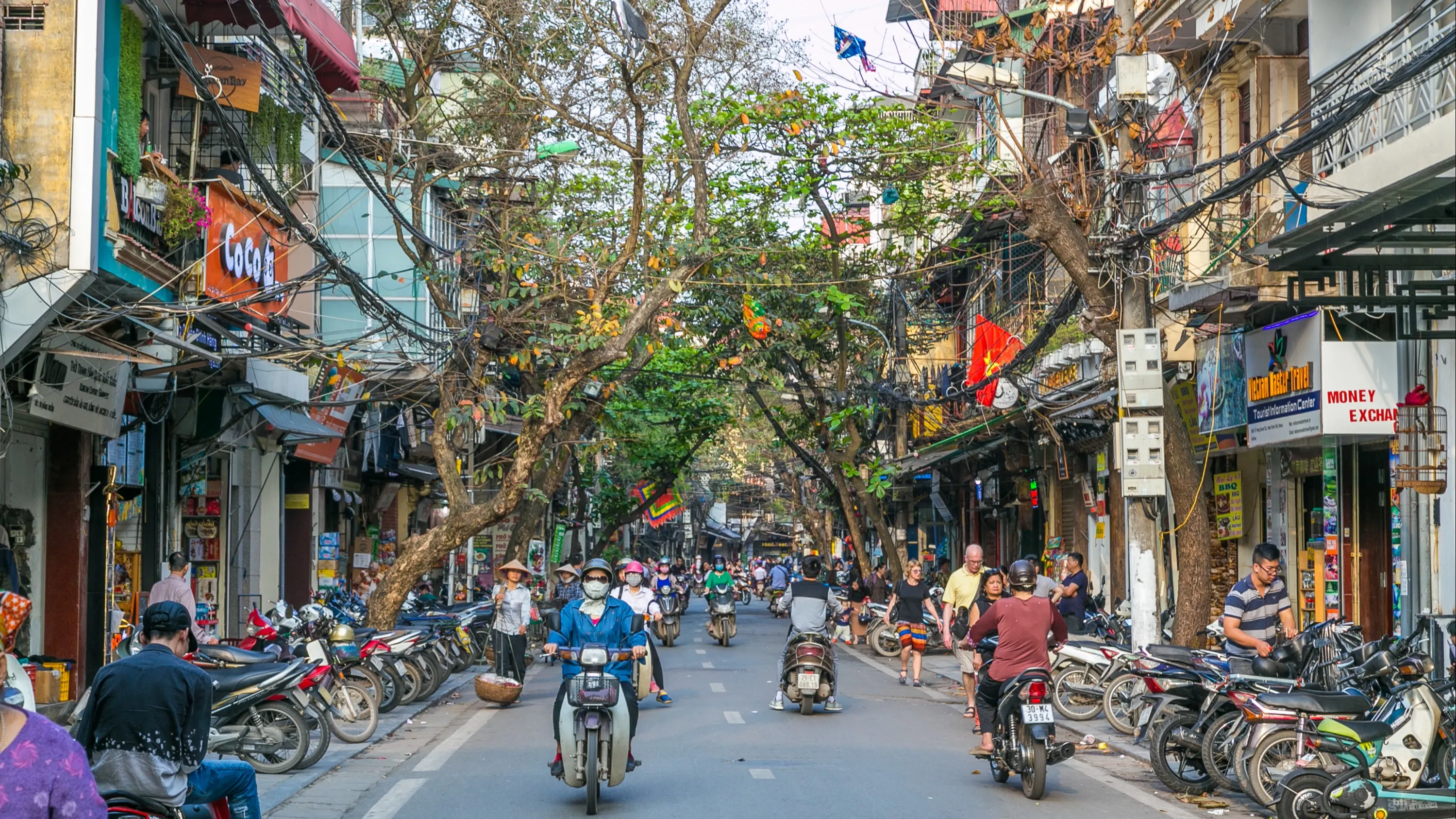
Though you’ll find the largest concentration of expat hangouts in Tay Ho, there are many excellent choices in Hanoi’s other districts, as well. The Moose and Roo Smokehouse, under the same ownership as the Moose and Roo Pub and Grill in Tay Ho, shares space with the American Club in Hoan Kiem District, not far from the Old Quarter. This restaurant serves excellent American food, cold craft beer, and offers a wide selection of cocktails and imported spirits that are uncommon in this part of the world. Once serving almost exclusively expats and diplomats, the Smokehouse has become popular among the Vietnamese community, too; now, they receive a good mix of locals and foreigners. Teddy’s American Grill House is another popular restaurant that expats frequent. Chops, which serves up tasty burgers, beer, and great macaroni and cheese with a local twist, has branches in Tay Ho, Hoan Kiem, and Ba Dinh districts; all of them are usually full of regular customers, both foreign and Vietnamese.
One of the nicest things about Hanoi is the many lakes and parks in the city. The most famous of these is Hoan Kiem Lake (“Lake of the Returned Sword”) in the city center. This tree-lined lake contains the iconic “Turtle Tower” island and the photogenic Ngoc Son Temple (“Temple of the Jade Dragon”) on the northern end. The lake is encircled by walking paths and park benches. Across the street are coffee shops, popular with anyone coming to this area who wants to rest their feet and gaze upon the peaceful scene. Hoan Kiem Lake has been called the “Heart of Hanoi,” and it’s a must-see place for anyone coming to the city. For residents, it’s a place to relax, chat with other expats, and help Vietnamese students practice their English.
Vietnam has a distinctive coffee culture, and Hanoi has hundreds, if not thousands, of coffee shops. Many of these places also serve smoothies, fresh-squeezed juices, and light snacks. Not only are these wonderful places to sit and watch the world go by, they are also perfect venues for meeting other people. You’ll have the best luck finding other foreigners to chat with at the coffee shops around Hoan Kiem Lake. Cong Ca Phe and Highlands Coffee, in various locations throughout the city, are two homegrown chains that attract a mixed local and foreign clientele.
The Best Day Trips From Hanoi
By Wendy Justice
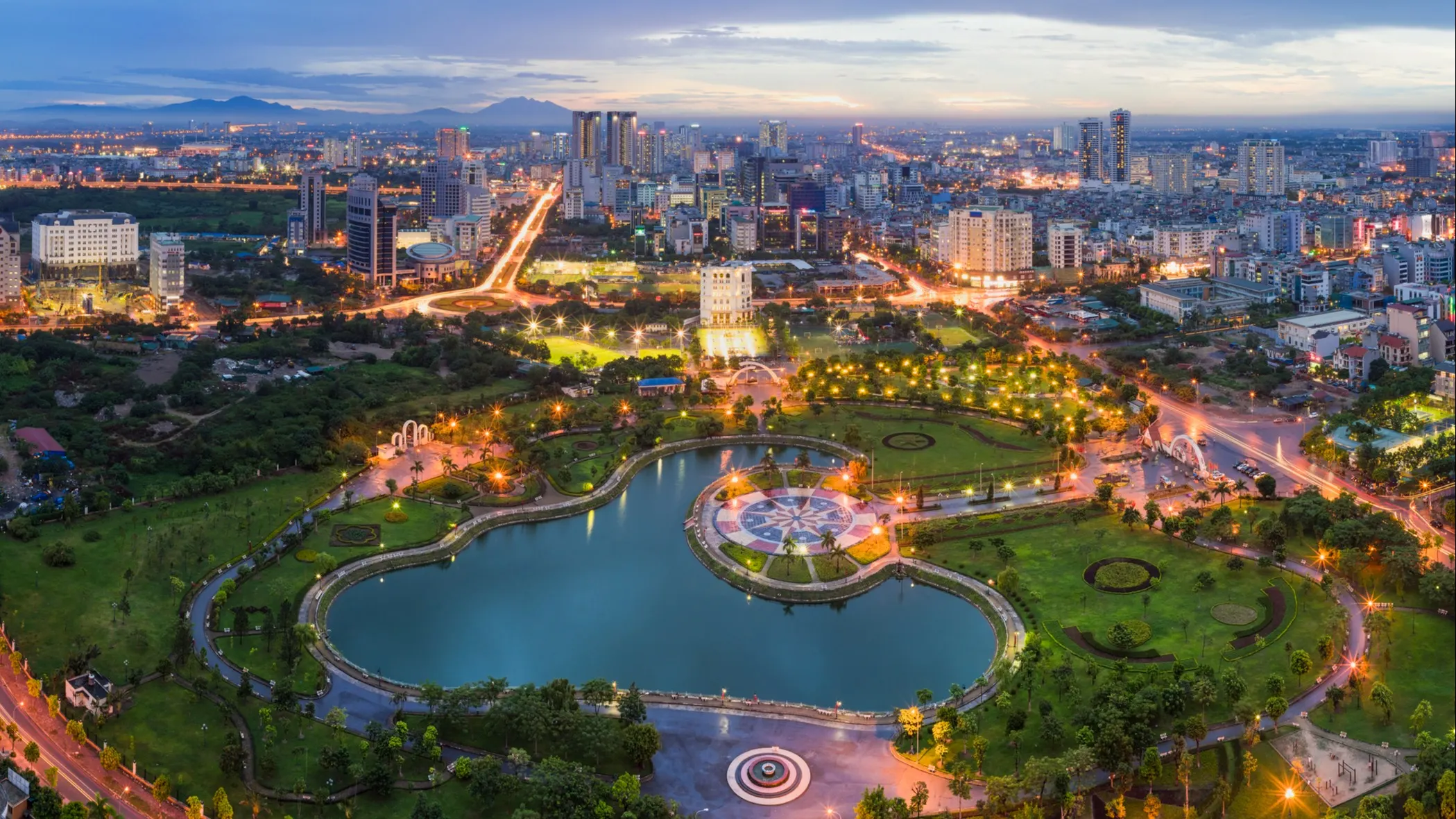
It’s easy to spend weeks or months just exploring Vietnam’s historic capital city of Hanoi, but you also have your pick of several great day trips just beyond the city. Here are a few of my favorite getaways.
An Ancient Village and a French Hill Station

The ancient village of Duong Lam, the birthplace of two of Vietnam’s great historic kings, is less than two hour’s drive west of Hanoi, but it’s a world away from the bustling city.
The village is about 1,200 years old and the oldest houses still in use date back to 1649. There are more than 950 ancient houses and 21 relic sites in and around the town, most of them made from bricks of burnt-ochre clay taken from local ponds.
There’s an imposing gothic Catholic Church here that was built by the French during their colonial rule of Vietnam, and Phung Hung Temple, Ngo Quyen Temple, and the multi-tiered Mia Pagoda are just five minutes from the village center. These are active places of worship; you’ll smell the incense and see devotees praying at the altars.
Ba Vi National Park is just eight miles from Duong Lam. A steep and winding road makes its way toward Ba Vi Mountain’s 4,252-foot-high summit. The tropical vegetation gradually gives way to pine forests and noticeably cooler temperatures. Along the way, you’ll pass by a small restaurant that offers jaw-dropping views of the Red River Valley far below.
The road continues its ascent past the ruins of a Catholic church to a parking area, where two trails lead to the top of the mountain. The steep trail on the left leads to a temple honoring Ho Chi Minh, while the shorter trail on the right ascends to a second summit with an 11th-century shrine dedicated to the Mountain God. On a clear day, the view is superb; on a foggy day, it’s eerie.
Trang An—Take a Rowboat Through the Caves
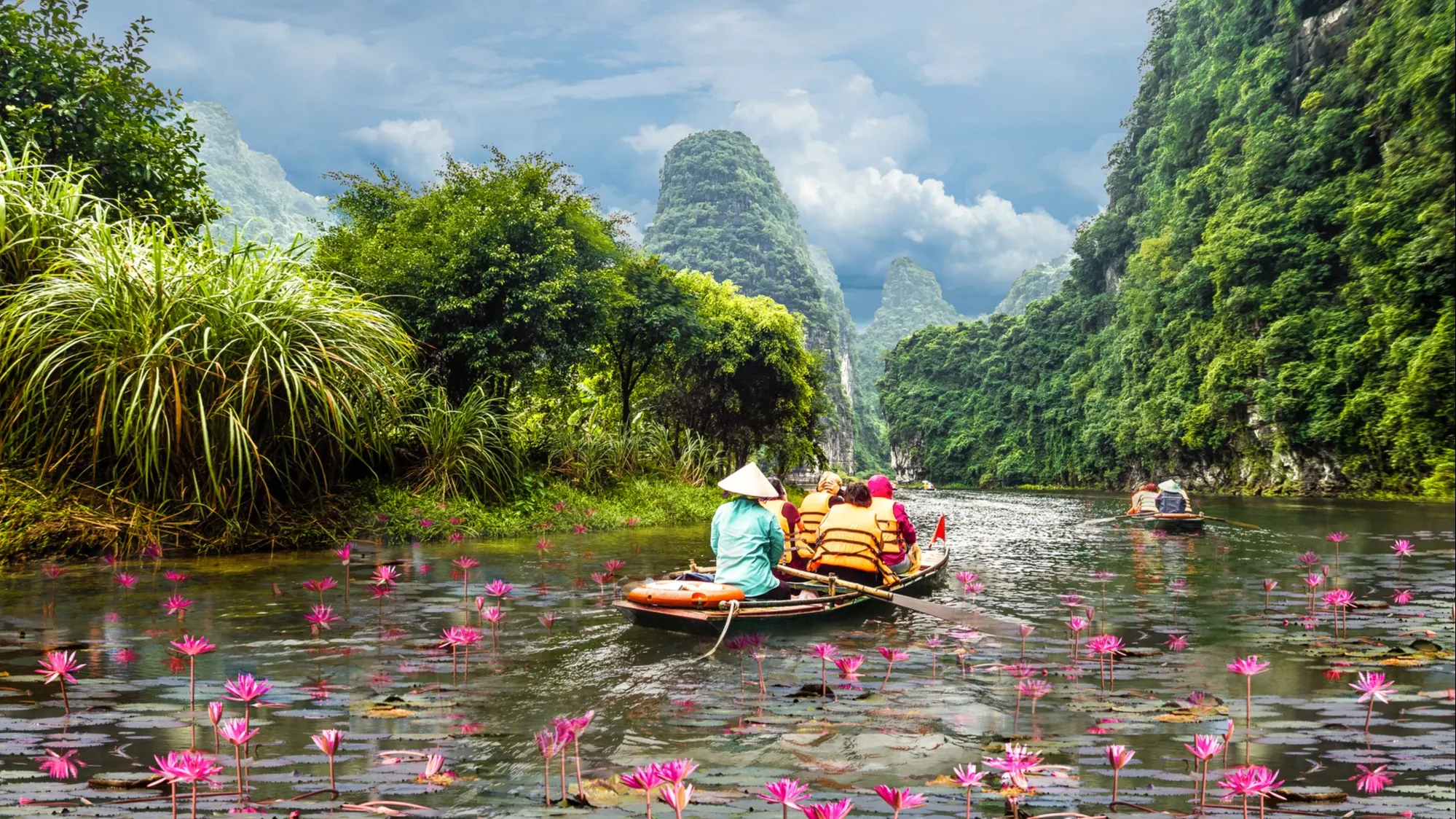
The UNESCO World Heritage Site of Trang An is less than two hours from Hanoi. Take a trip on a rowboat, expertly maneuvered by local women, past dramatic limestone cliffs, solitary Buddhist temples and pagodas, lush jungle foliage, isolated fields, and deep valleys. Be sure to watch for mountain goats perched precariously on the cliffs.
Depending on the season, the river flows through up to nine caves. These aren’t caves that you explore on your own; you’ll be in the rowboat the entire time. Some of the caves are quite long, and it takes several minutes to reach the other side.
Nearby Tam Coc is also part of the UNESCO complex. It offers a similar river and cave experience, but tends to receive more tourists than Trang An. You could easily visit both rivers in a day.
Cuc Phuong: Vietnam’s Oldest National Park
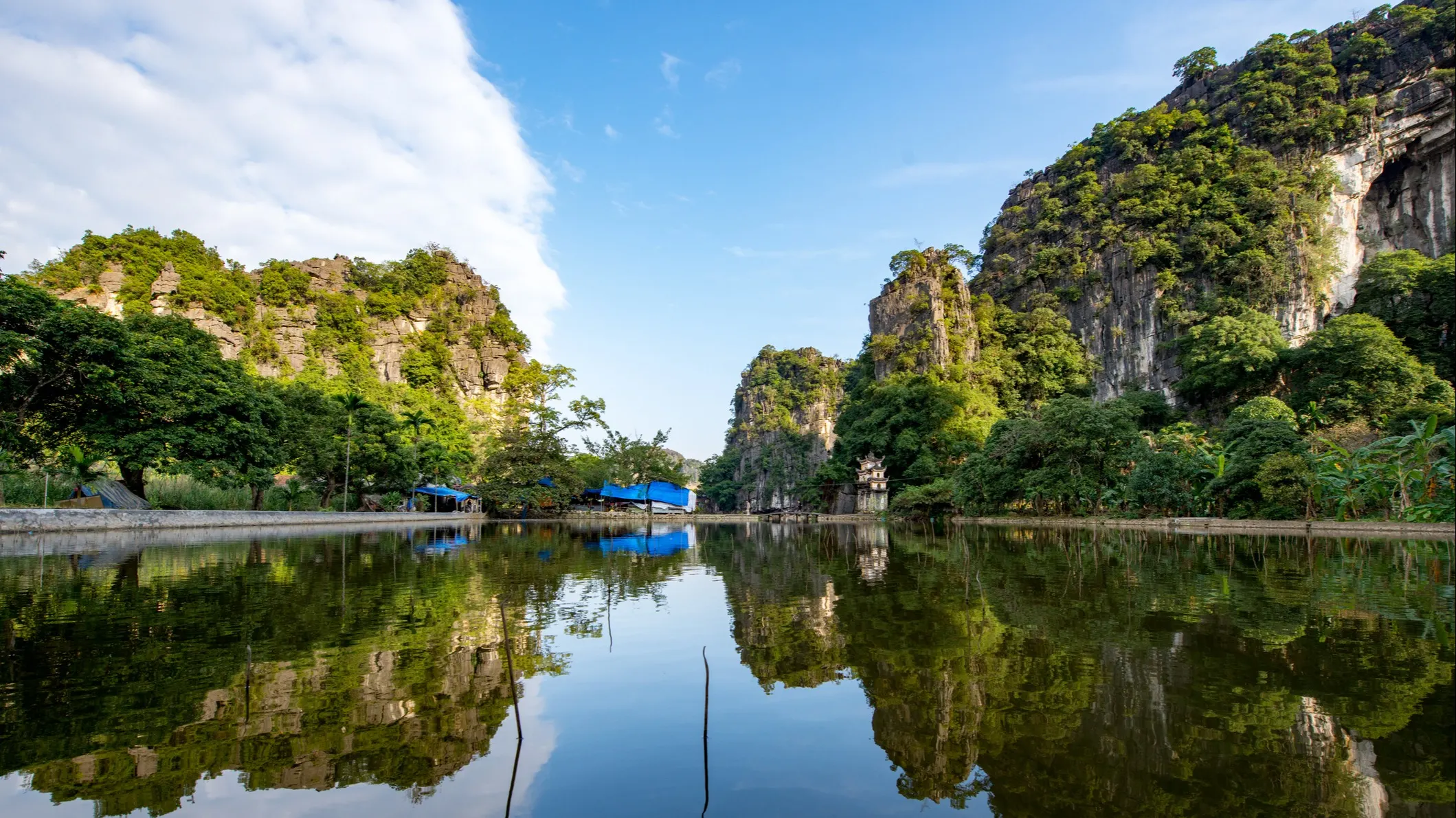
Cuc Phuong National Park is Vietnam’s oldest national park but typically receives few visitors—surprising considering all the park has to offer. Immerse yourself in the largest remaining virgin rainforest in Vietnam among 350-foot-tall trees, wild orchids, and thousands of butterflies. Trek to hidden waterfalls, climb to the 2,133-foot summit of Silver Cloudy Peak, relax on the shore of a scenic lake surrounded by nature, or explore caves containing sea fossils and the remnants of prehistoric man.
Cuc Phuong also hosts rescue and rehabilitation centers for endangered pangolins, jungle cats, primates, and turtles. Access is restricted to these centers, but a guide can be arranged at the visitor center. Volunteer opportunities are often available.
You could visit Cuc Phuong as a long day trip, though it’s better to stay overnight. The lodge next to the visitor center has simple, comfortable rooms, where you can relax in the evening and wake up to the otherworldly songs of the park’s gibbons.
A Private Museum Hidden in the Forest
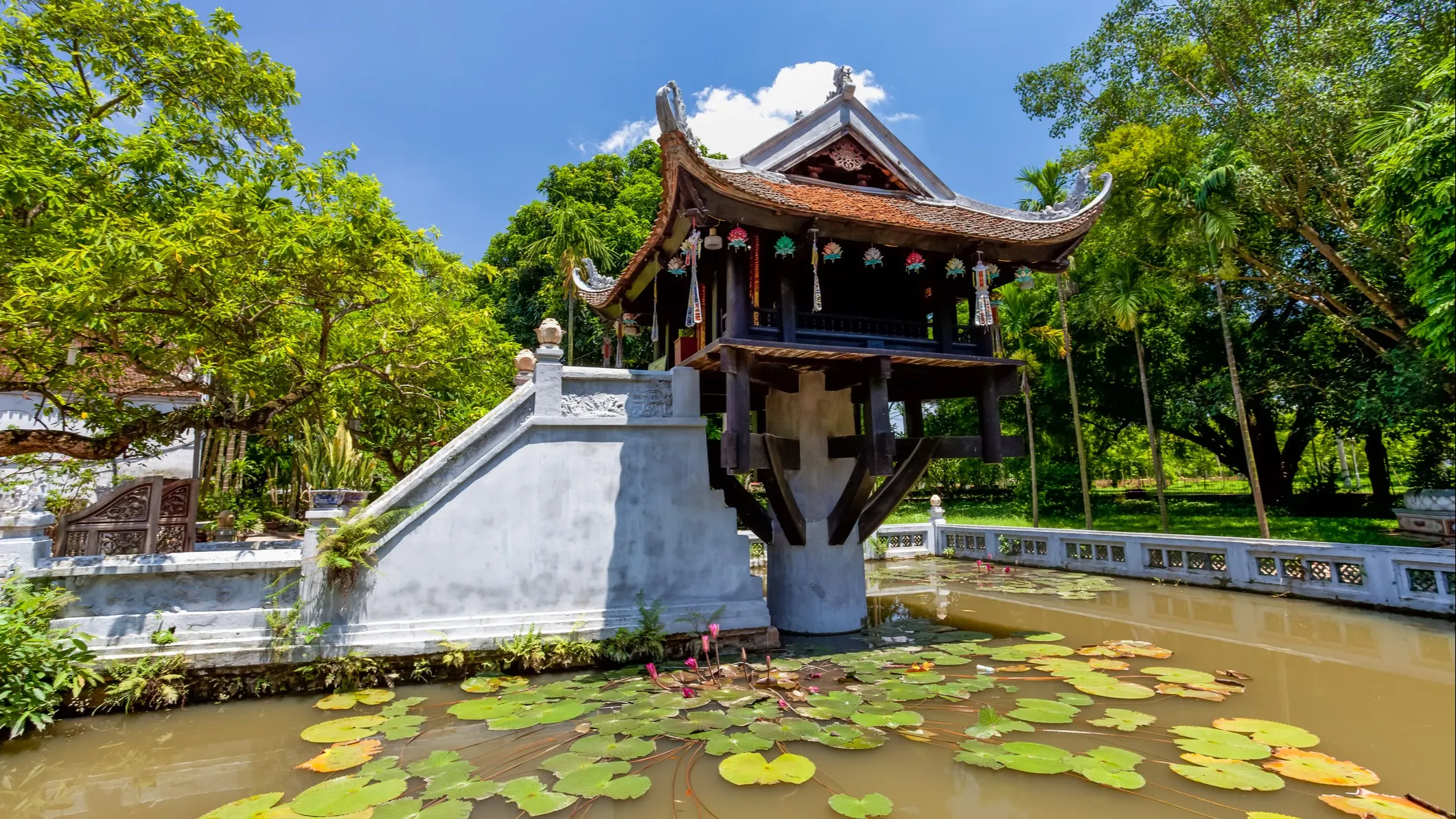
The little-known Thanh Chuong Viet Palace is near the town of Soc Son, less than an hour from Hanoi. The extensive collection of art here represents the life’s work of the celebrated painter Thanh Chuong, but the best parts of the palace are the grounds. When wandering the paths, you’ll pass small lotus-filled ponds stocked with lazy, red koi fish. There are towering pagodas, Buddhist temples guarded by horses rather than the traditional dragons, twisting bonsai, and hundreds of stone, wood, bronze, and ceramic statues. A tree might have a little red Buddha nestled among its branches; stone horses, water buffalos, elephants, dragons, and whimsical statues of soldiers, workers, and farmers rest under the shade of the leafy tropical foliage.
Around the ponds and elsewhere on the grounds, you’ll find intricately carved Buddha statues standing guard over pots filled with burning incense. Traditional wooden houses offer quiet areas to sit and relax or have a cup of tea. The surrounding area is green and mountainous, full of bamboo, lush tropical plants, and trees.
Pagodas, Jungle Walks, and Cool Weather in Tam Dao
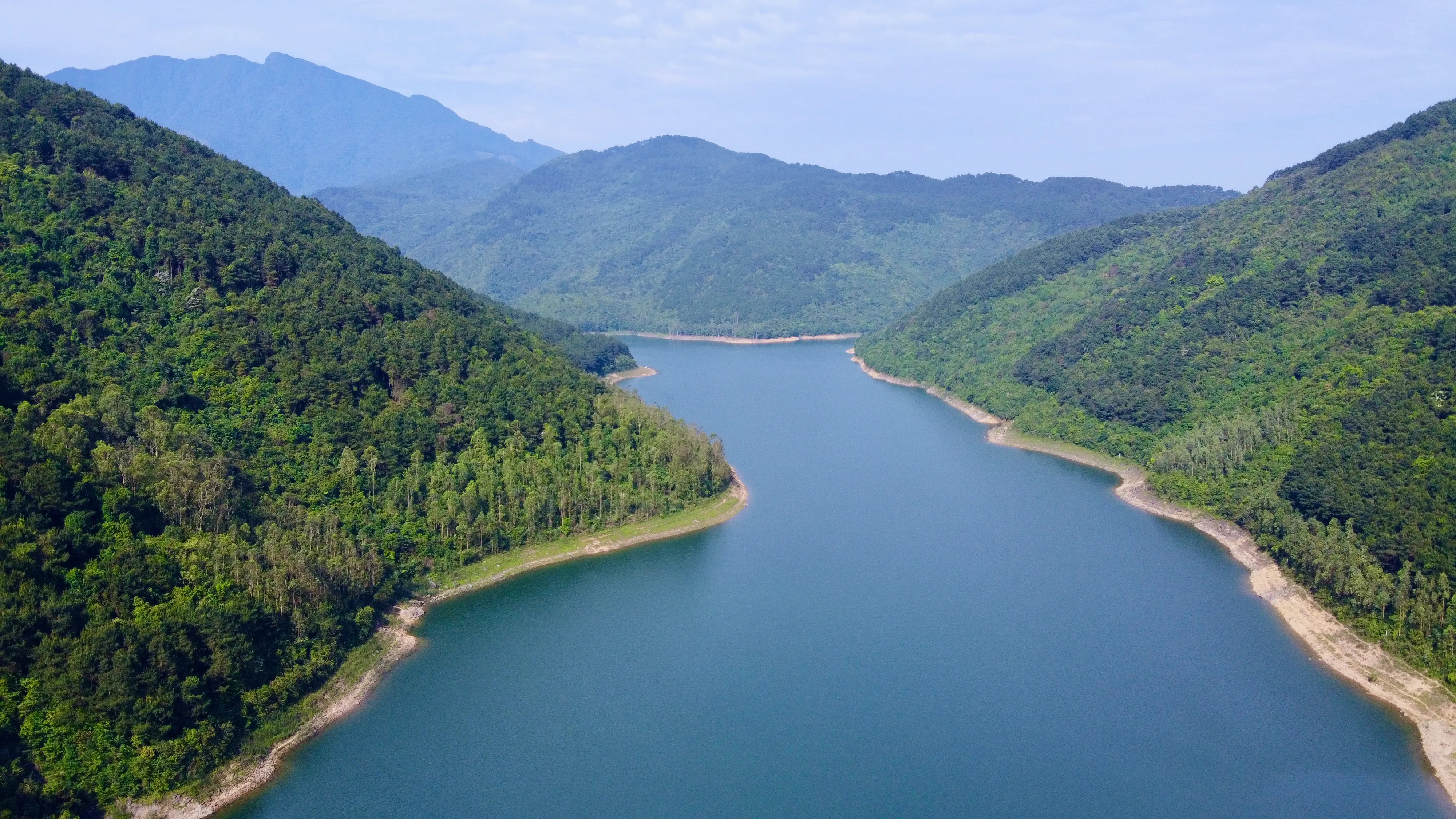
The former French hill station of Tam Dao, just 50 miles northwest of the city, perches at a lofty 3,051 feet and is noticeably cooler than Hanoi. On a clear day, you can see across the Red River Delta, and when the fog rolls in each evening, the clouds seem to chase each other around the mountainside as if they were alive. The effect is magical!
Tam Dao National Park is just a 10-minute drive from the town center. You can walk through the forest in solitude; it’s not a busy park, and you likely won’t run into another soul.
A steep paved trail leads down from the Mela Hotel to a pretty waterfall, and there’s an interesting Buddhist temple just five minutes or so from town.
Tam Dao is an excellent day trip from Hanoi, but if you want to watch the evening fog, you’ll find plenty of hotels where you can spend the night.
Get in Touch With Your Spiritual Side—In a Cave
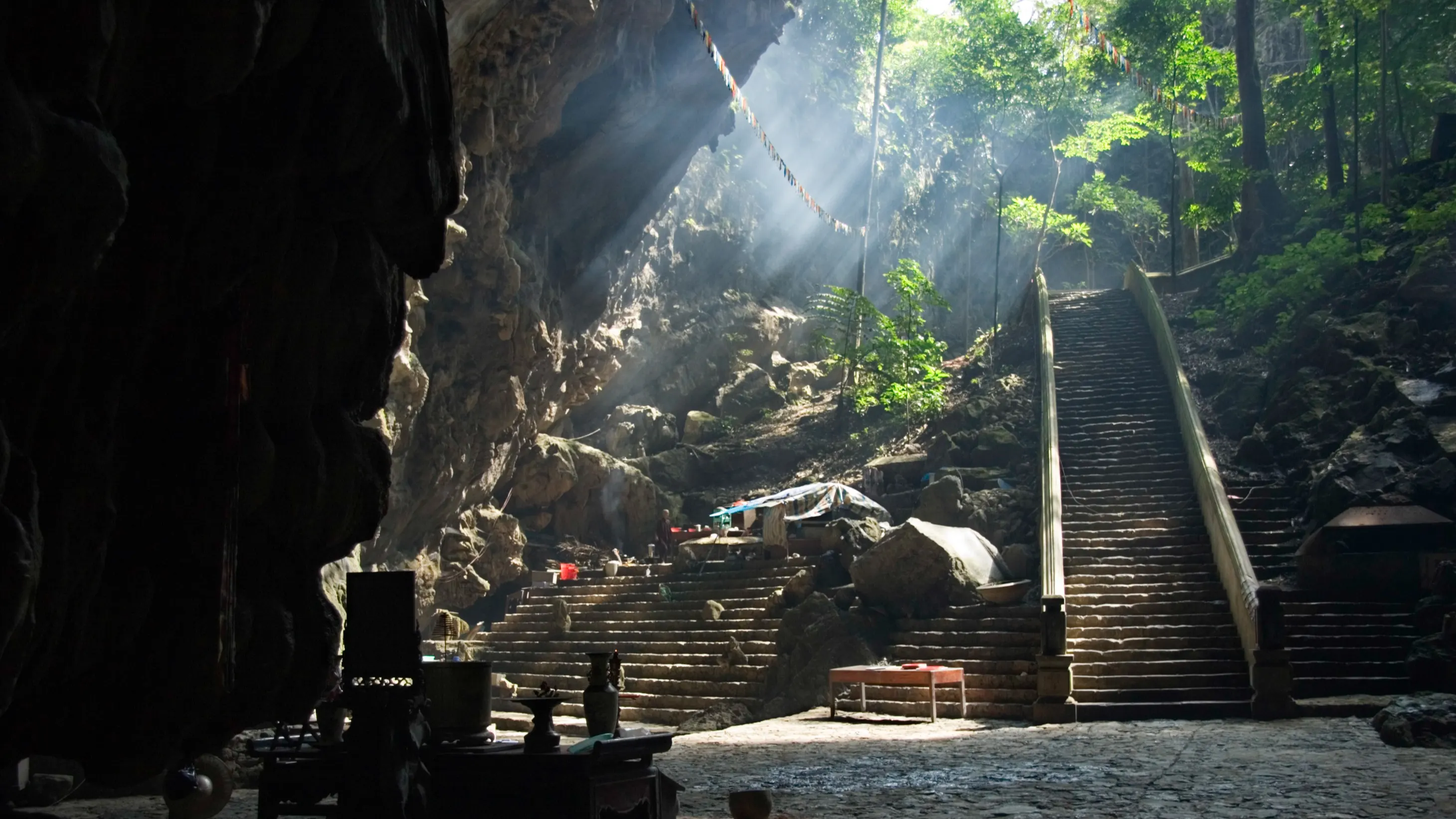
The Perfume Pagoda is a large temple complex just a couple of hours from Hanoi. No roads lead to the site; instead, rowboats take visitors and devotees past several busy Buddhist temples to the base of the main complex. Hundreds of steps lead up to the Perfume Pagoda; it’s an arduous climb. Alternately, a cable car is available to ferry passengers to the top and back.
The cave that houses the main temple is massive, with high ceilings and huge formations. Many people in the north try to visit it at least once a year—usually in early spring during the Huong Pagoda Festival—to pray for health and good fortune. The cave is impressive, and the temples at the base are worth exploring, too. There’s an area near the base where monks will prepare “temple food” for you—delicious vegetarian cuisine at a reasonable price.
15 Best Things to Do in Hanoi
By Wendy Justice
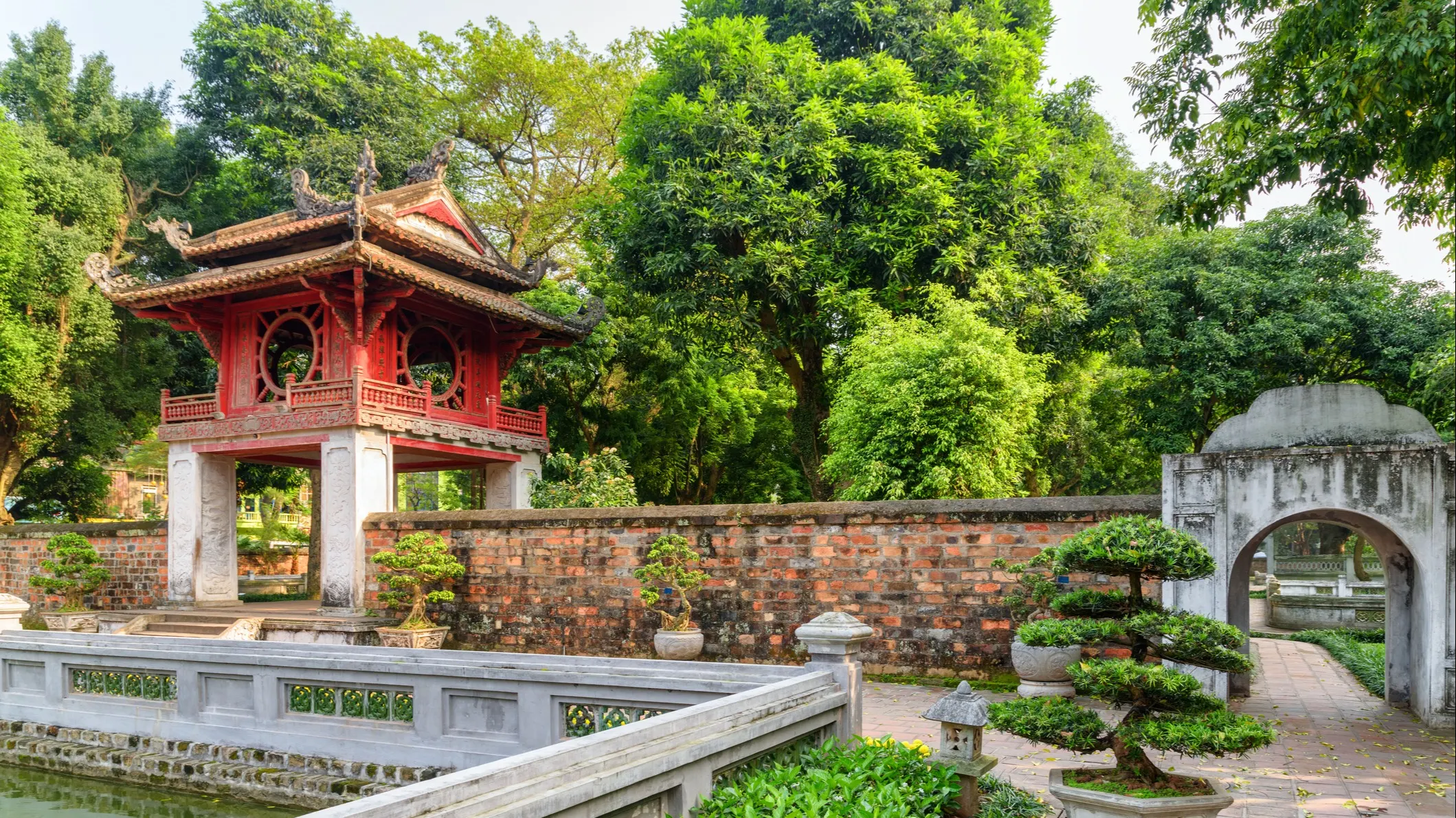
Hanoi offers mystery and intrigue around every corner. Vietnam’s capital city is a fascinating mix of historical influences: traditional Chinese medicine dispensaries stocked with enigmatic herbs, grand French colonial-era mansions colored with the patina of age, traditional markets that are the same now as they were a century ago, and more motorbikes than you’ve probably seen in a lifetime. Here are some of my top picks for exploring this vibrant city:
1. Get Lost in the Old Quarter

The Old Quarter, in the city center, is a jumble of streets clogged with bicycle vendors, little motorbikes, cars, and food vendors, all busy on their way to somewhere. The energy here is palpable. Wander past hidden temples tucked into alleyways, exotic traditional markets, and fantastic street food. Exploring the Old Quarter is a delight for the senses; wherever you go, you’ll find a photograph waiting to be taken. It’s the perfect place to begin your exploration of the city.
2. Take a Stroll Around Hoan Kiem Lake

Hanoi’s much-loved Hoan Kiem Lake is an easy walk from the Old Quarter. Wander along the footpaths surrounding the lake, past mature shade trees, and flower gardens. At the northern end of the lake, a graceful red wooden bridge leads to Ngoc Son Temple (Temple of the Jade Mountain). You’ll see Thap Rua (Turtle Tower), built in 1886, on a small island at the south end of the lake. The entire area around the lake turns into a pedestrian-only zone every weekend.
3. Sample Hanoi’s Special Egg Coffee
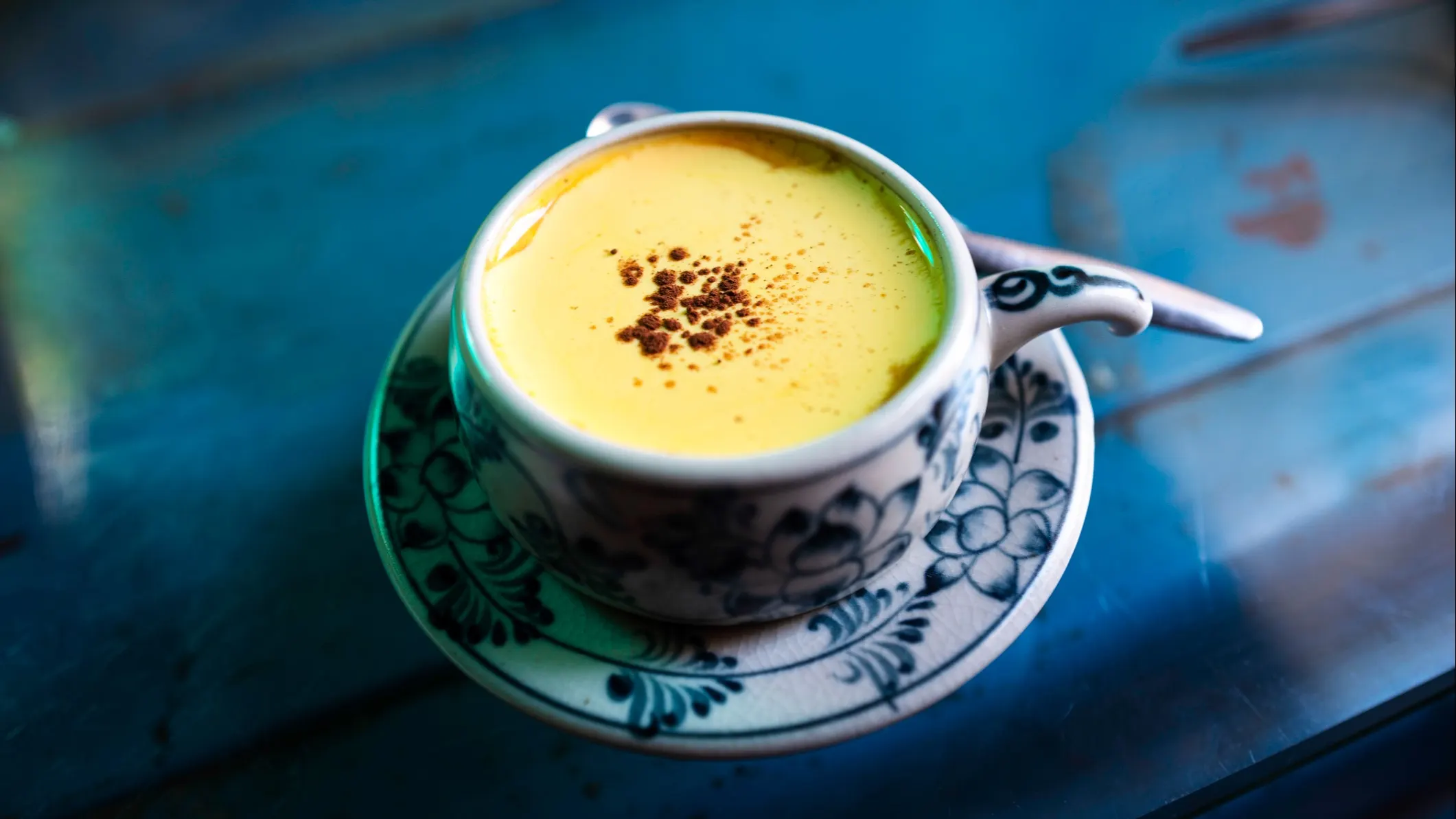
This drink—a combination of strong Vietnamese coffee, sweetened condensed milk, and whipped egg yolk—tastes much better than it sounds. The milk and egg combine to form a thick and foamy marshmallow-like meringue, which is carefully floated on top of the coffee. Café Giang is the most famous venue—they’ve been brewing this delectable treat since 1946.
4. Spend an Evening at the Opera
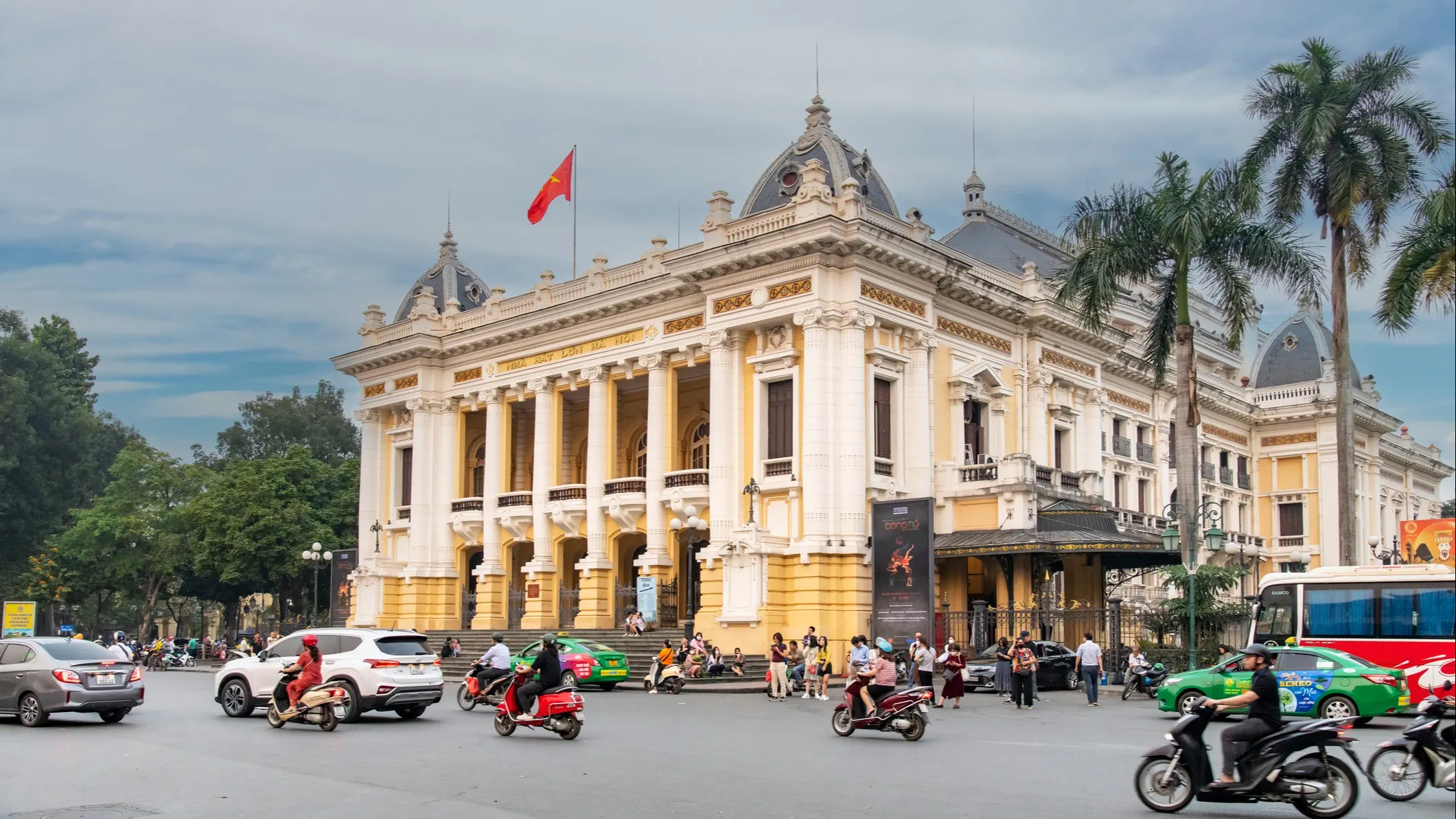
The Hanoi Opera House, built by the French in 1901, is one of Hanoi’s grandest examples of colonial architecture from this period. It’s worth going to a show there if possible; the inside is as ornate as the exterior.
5. Visit the Historic Sofitel Legend Metropole Hotel
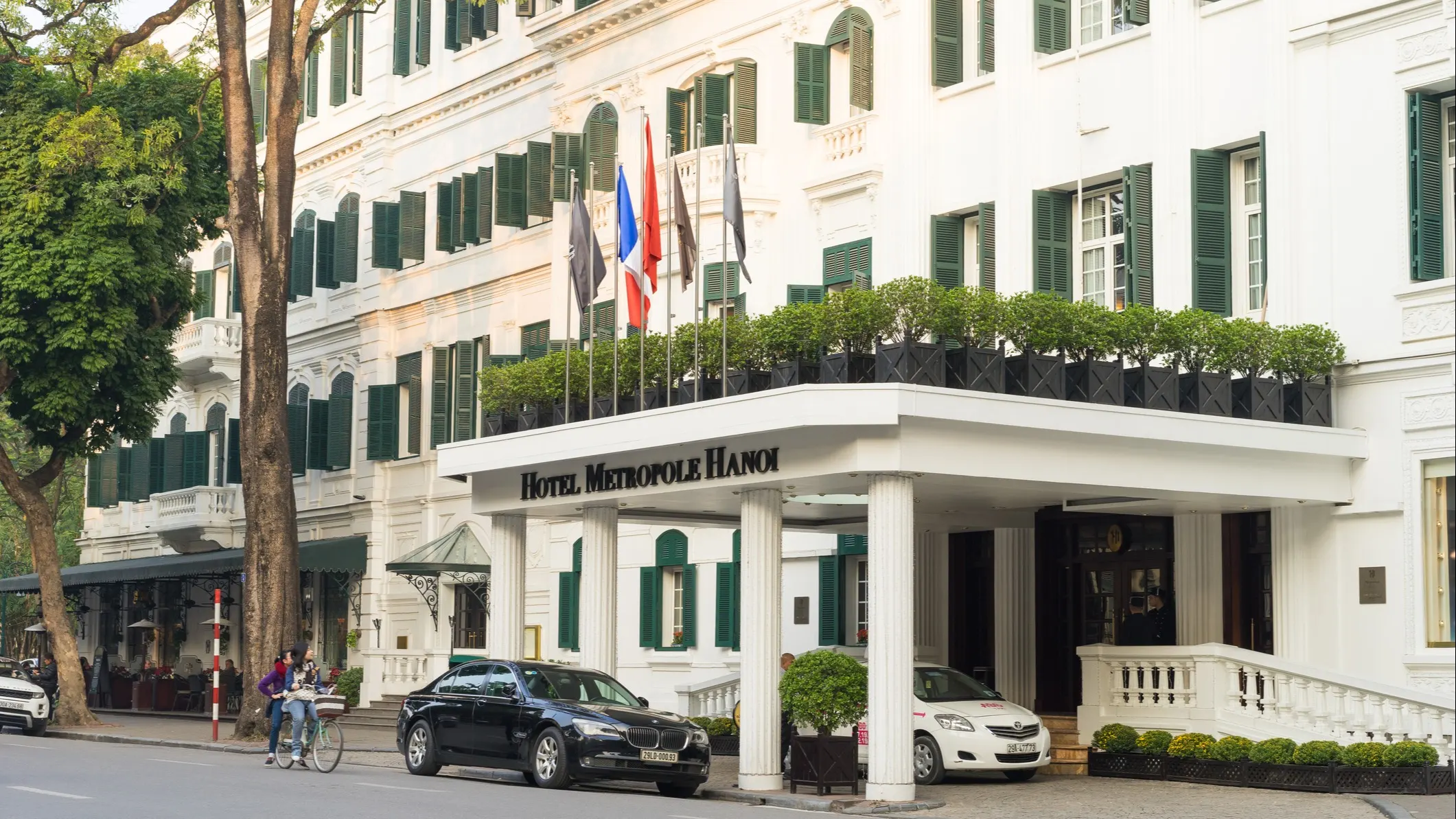
Even if you aren’t a guest at this five-star hotel, stop by and explore the lobby, which has several interesting displays about the history of the hotel and photos of the famous diplomats, presidents, and celebrities who have stayed there. If you happen to be a guest, you can also tour an underground bunker that was in use during the war and rediscovered during a recent renovation. If you need to satisfy a sweet tooth, the Metropole offers a decadent chocolate buffet every afternoon.
6. Visit the Vietnamese Women’s Museum
This thoughtful interactive museum shows the roles that Vietnamese women have played in history, the arts, and in family life. Galleries highlight the role of women in wartime Vietnam, the incredible textiles and clothing made by ethnic minority women, and the evolution in the daily life of Vietnamese women today. It’s one of the best museums in Vietnam.
7. Visit the Museum of Ethnology
If you’re interested in learning about the 54 ethnic minorities living in Vietnam, or contemplating making a trip to the northern or central highlands to visit some of the minority villages, the Vietnam Museum of Ethnology is well worth seeing. This carefully curated museum has many indoor and outdoor exhibits, including full-scale, traditionally built replicas of the distinctive houses and lodges of Vietnam's major ethnic minorities. Descriptive signage accompanies each exhibit.
8. Shop at Hanoi’s Largest Traditional Market
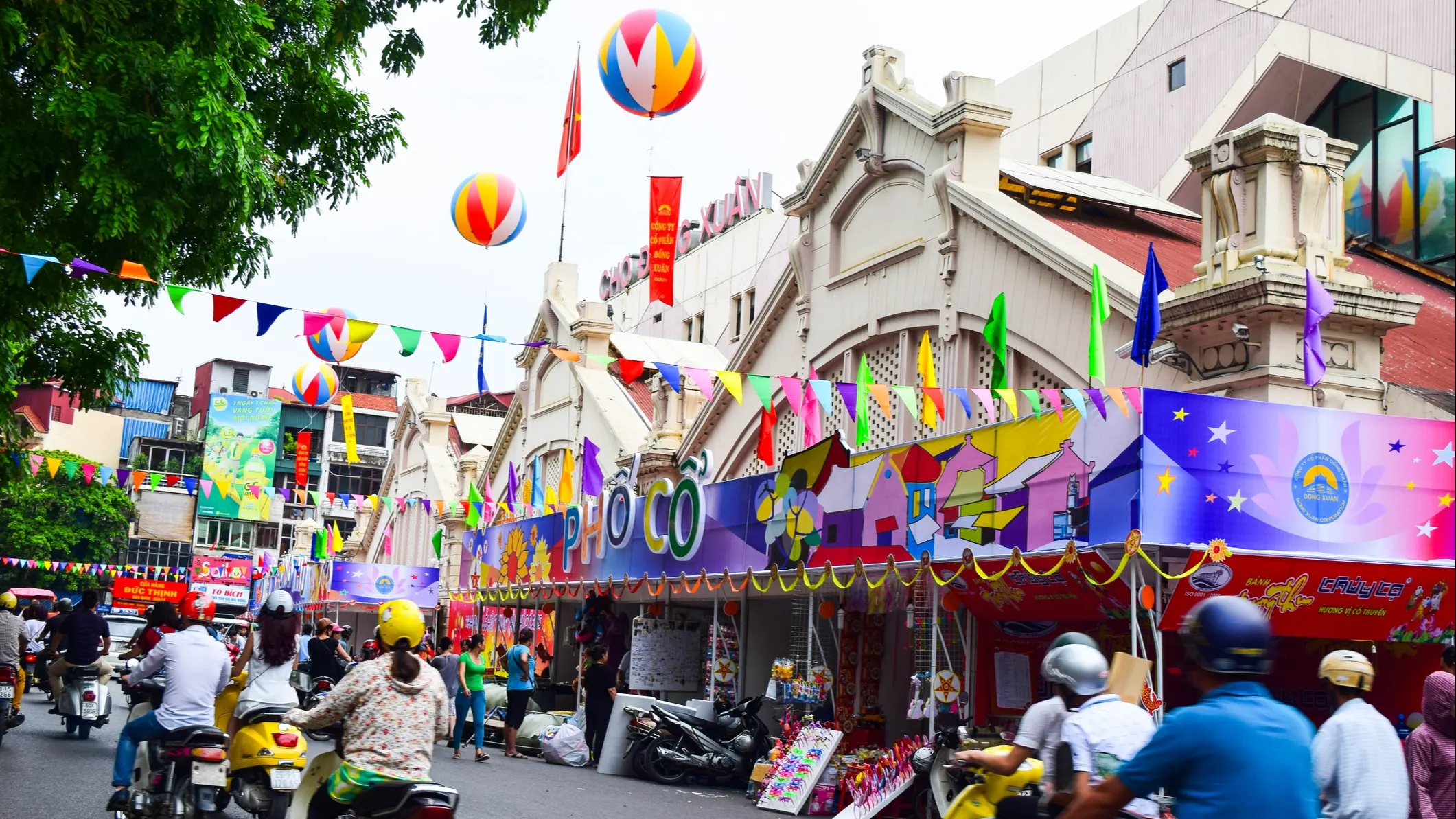
Vendors at the massive four-story Dong Xuan Market sell everything from fresh fish and produce to textiles, tools, appliances, clothes, and souvenirs. If it exists, it’s probably sold here, but be prepared to bargain.
9. Savor One of Hanoi’s Most Famous Breakfasts
Bun Cha—a delicious meal of marinated char-grilled pork, grilled ground pork patty, rice vermicelli, fresh herbs, and sweetened fish sauce—is served throughout Hanoi. Former President Obama had it and a few beers with Anthony Bourdain at the Bún Chả Hương Liên Restaurant, and so can you. There’s even an altar inside honoring their visit.
10. Experience the Hanoi Hilton
To gain a deeper understanding of Vietnam’s history, visit the Hoa Lo Prison, otherwise known as the “Hanoi Hilton.” This was the infamous prison where many Vietnamese prisoners during the French occupation were detained, as well as many POWs from the war with the U.S. (including former U.S. Senator John McCain). It’s a sobering place that focuses mainly on the period during the French occupation, with a few later exhibits from the American war.
11. Visit the UNESCO World Heritage Site of the Imperial Citadel of Thang Long

The Imperial Citadel of Thang Long was built in 1010 A.D. and has an impressive massive stone entrance gate. Take the stone pathway past dozens of bonsai trees until you reach the royal enclosure. Many of the original structures have been lost to time, but you can still visit the buildings and an underground bunker where the North Vietnamese military command was headquartered from 1954 to 1974.
12. Learn about Vietnam’s Illustrious Military History
The Vietnam Military History Museum has an extensive collection of exhibits. The indoor galleries focus primarily on the French and Chinese conflicts; the outdoor exhibits include quite a collection of U.S. aircraft captured or shot down during the American War. The iconic Flag Tower of Hanoi, built in 1812, is on the same grounds as the museum.
13. Slurp Down a Bowl of Phở Bò
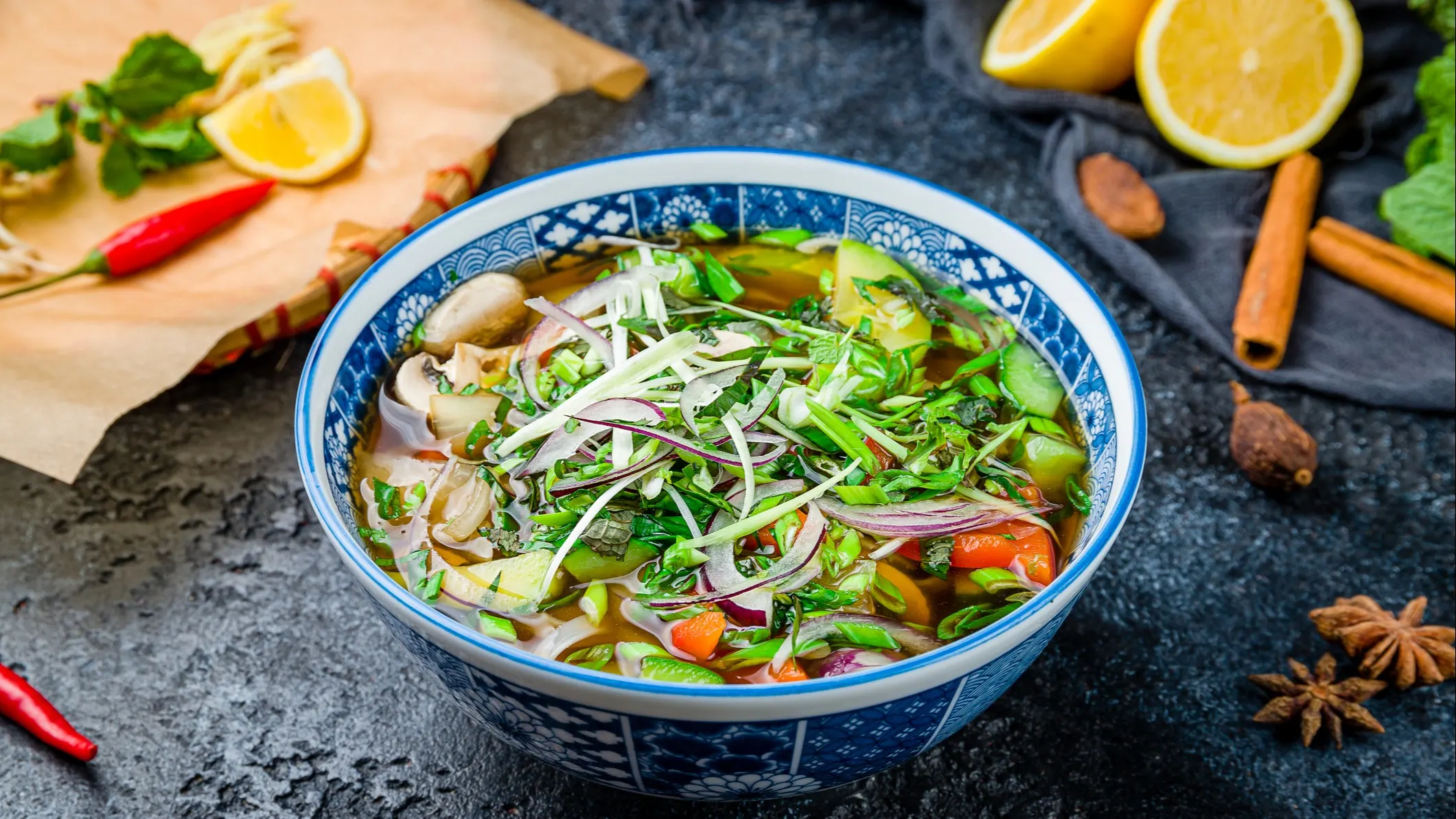
Vietnamese beef noodle soup, or phở bò, is one of Hanoi’s most famous dishes. Pull up a tiny chair on the sidewalk and have a steaming bowl at Phở Bò Khôi Hói in the Old Quarter. They’ve been serving this dish for generations; the beef marrow broth is rich and flavorful, and it’s served with generous portions of beef and rice noodles.
14. See Vietnam’s Largest Art Museum
The National Fine Arts Museum has a sprawling collection of art ranging from early history through the present day. It’s housed in a beautiful French colonial-era mansion that was once a Catholic girl’s boarding house.
15. Get in Touch with Your Spiritual Self
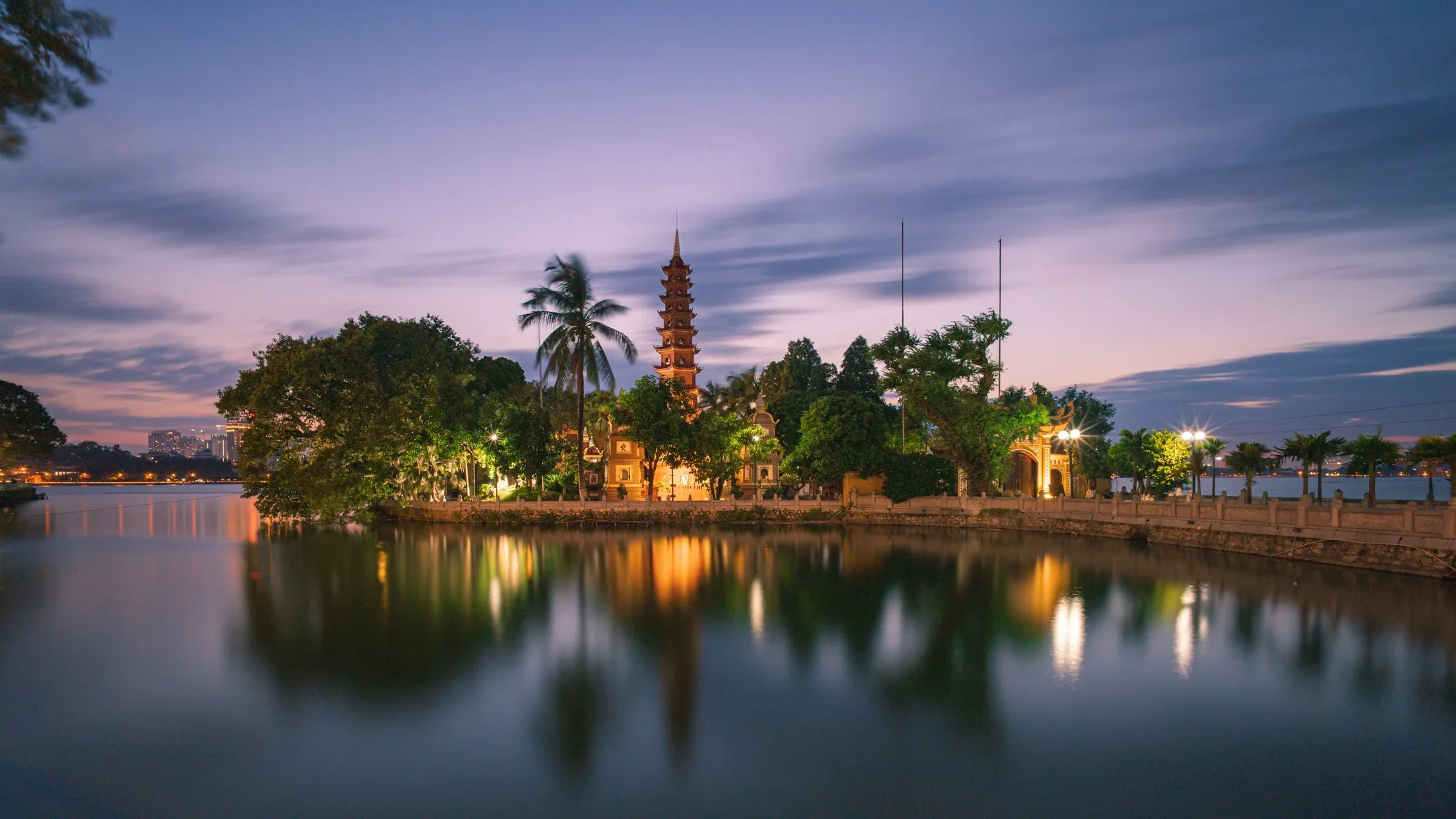
The Tran Quoc Pagoda, on the causeway that separates West Lake from Truc Bach Lake, is Hanoi’s oldest Buddhist temple. It’s been an active place of worship since its construction in the sixth century. The 11-story pink pagoda on the grounds is lovely.
Main Image: ©iStock.com/Marcus Lindstrom
